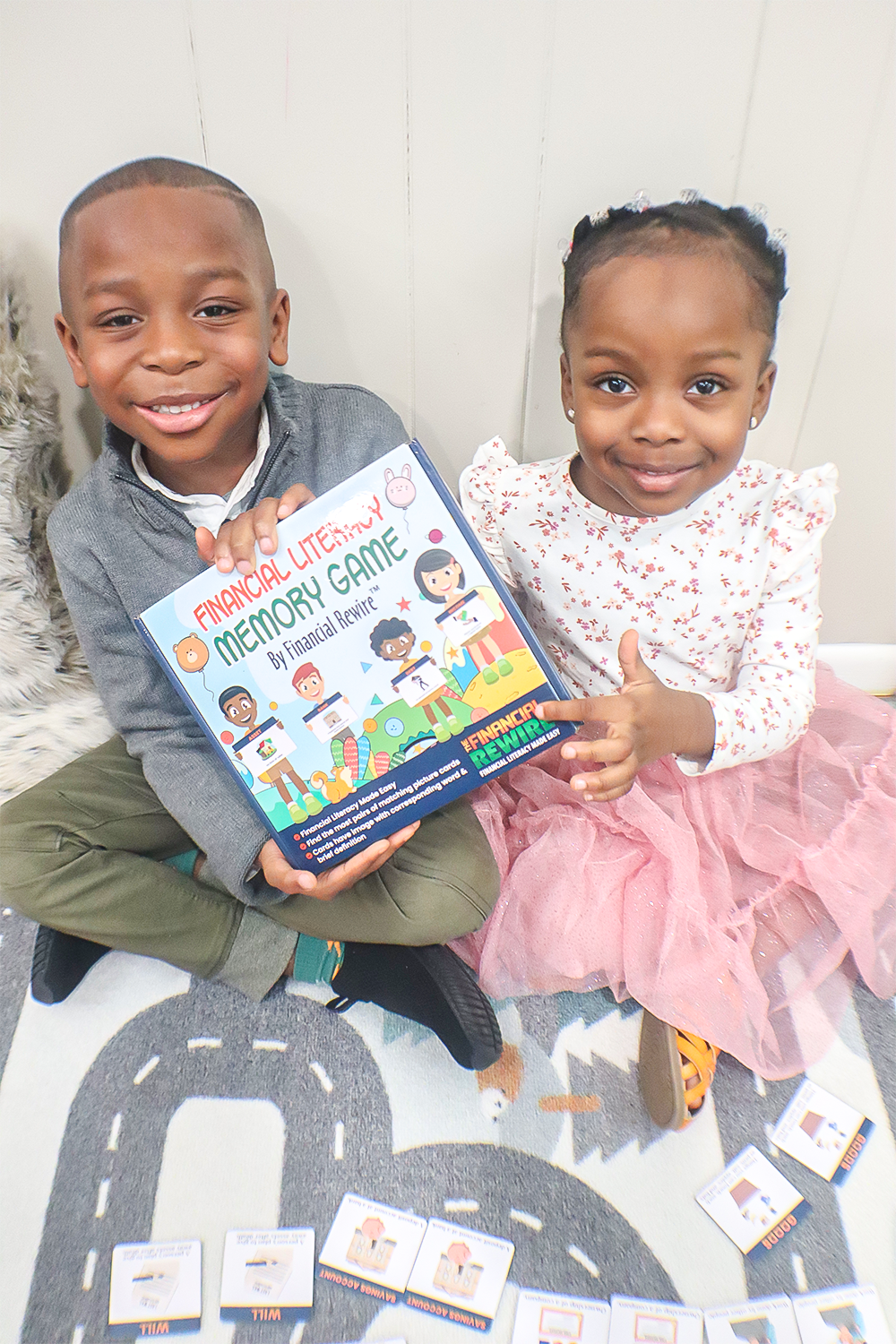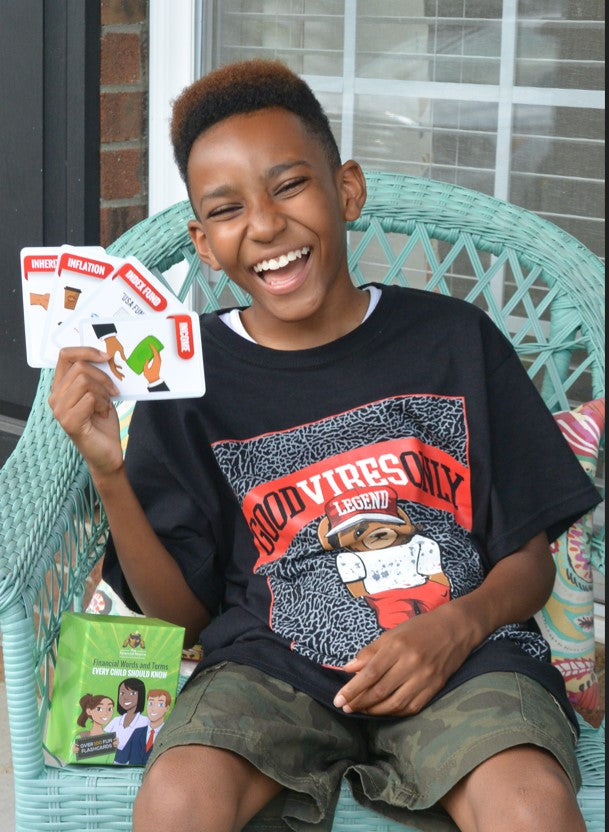How to Play
Our products are tools that can be used to start the financial literacy conversation with your child or as additional support to what you are already doing. We blend education and play to help jump start your child’s financial literacy journey. See below to learn how to play our games.

Memory Game
Get Ready!!!
For beginners, use only 17 matches (34 cards). For the regular game, use all 36 matches (72 cards). Mix up the cards and arrange them face down in rows of 9. You can remove one card to avoid a tied game.
Let's Play!!!
Turn over two cards to see if they match. All players should see the two cards flipped over. If they match, keep the pair and take another turn. If they don't match put them back face down in their original spot. Your turn is over.
Who Won?
Once all the cards have been collected count your matching pairs. Whoever has the most pairs is the winner.
Consider This...
Our memory game is a tool that can be leveraged to introduce financial literacy to young children. Simply playing our memory game won't get you the results that we want for your child. As the game is played a conversation needs to take place. Simply discuss the words/ terms and their corresponding definitions as the cards are matched. Through conversation and repetition, your child's understanding will grow, and their financial literacy foundation will strengthen.

Financial Literacy Flashcards
Our 100 Financial Literacy Words and Terms Every Child Should Know Deluxe Flashcard Set was not initially designed to be played as a game. However, through our supporters, we have learned that with a little bit of creativity, our set can be turned into a fun game.
First
Decide what cards you will be playing with—for example, intermediate cards only or maybe a mixture of the categories.
Second
The cards can be placed image side down, definition side down, or a mixture of the two. The cards can be stacked if playing with a large number of cards, otherwise, the cards can be spread out. If spread out, have a child pick a card. If the card is image-side up, they should paraphrase the corresponding definition (use our Definition Quick Reference Sheets to quickly confirm the accuracy of the child's answer.) If the card is definition side up they should be able to provide the correct corresponding word or term. If there is more than one player, the next child gets a turn regardless if the previous child got the answer right or wrong. If the correct answer was provided remove the card. If an incorrect answer was provided and the cards are being pulled from a stack, the next child can attempt to provide an answer to that card or pass on it to go to the next card. If the cards are spread out the the next child can pick any card. Whoever provides the most accurate answers is the winner. If the child is playing solo keep track of their high score to beat on the game.
Remember, as the game administrator, you can use our Definition Quick Reference Sheets to be able to quickly determine the accuracy of the answers given.
